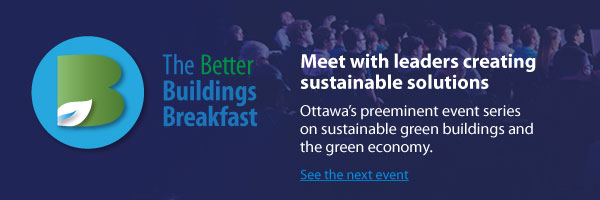Recent Articles
UCalgary’s road map to carbon neutrality by 2050
UCalgary’s road map to carbon neutrality by 2050
The 2019 Climate Action Plan is UCalgary’s operational road map to a carbon neutral campus by 2050. It outlines strategic actions for reducing GHGs and becoming an energy-efficient, low-carbon campus. CAP is a strategic operational plan that supports the Institutional Sustainability Strategy.
Hamilton could be carbon-neutral by 2050
Consultant Yuill Herbert shared the results of an audit of Hamilton and Burlington’s carbon emissions at a Bay Area Climate Change Summit this week. Hamilton can reduce its carbon emissions to zero by 2050 by retrofitting all buildings, using electric vehicles and making big changes at the steel mills.
Green building codes could be boon Vancouver CRE
The Vancouver Economic Commission (VEC)’s Green Building Market Forecast says that B.C.’s Energy Step Code (ESC) could generate $3.3 billion over the next 14 years while creating 1,170 new jobs in the province.
100-year-old research reveals climate changes
• CBC
More than 100 years old, Alexander Mackay enlisted the help of thousands of Nova Scotia schoolchildren to conduct research in one of the largest and earliest citizen science efforts. That data is helping to reveal more about climate change today.
The first Sustainable SITES Initiative v2 Platinum project
The Center for Sustainable Landscapes (CSL) at the Phipps Conservatory and Botanical Gardens in Pittsburgh, Pa., has recently become the first certified Sustainable SITES Initiative v2 Platinum project in the world.
Glazing encloses a timber-framed building in Toronto
At the leading edge of a small wave of timber-framed buildings coming to Toronto, Hullmark‘s project at 80 Atlantic Avenue will serve as the city’s first wood-frame office building in a generation. The five-storey Quadrangle mass-timber design has been underway since 2017.
The journey towards Canada’s clean growth economy
This year’s budget allocates resources to continue to deliver on a fundamental mandate Canadians gave the federal government in 2015 to protect the environment and grow the economy. Canadians know that action commensurate with the scale of this challenge is key.
Decarbonization goals in Green New Deal are attainable
• GreenBiz • Environmental Leader
The conversation about a Green New Deal is bold, timely and necessary. The most important component of the Green New Deal as drafted is its commitment to complete decarbonization, the moon for our moonshot. How do we get there?
Global energy demand rose by 2.3% in 2018
The International Energy Agency report found energy demand worldwide grew by 2.3% last year, its fastest pace this decade, driven by a robust global economy and stronger heating and cooling needs. Natural gas emerged as the fuel of choice accounting for 45% of the rise in energy consumption.
Coal plants emitted more than ever in 2018
Global energy experts released grim findings Monday, saying that not only are planet-warming carbon-dioxide emissions still increasing, but the world’s growing thirst for energy has led to higher emissions from coal-fired power plants than ever before.
Electrification and efficiency, an enduring relationship
• GreenBiz
As more states and cities set aggressive policies toward a carbon-free future, the energy industry is abuzz with the concept of electrification. What does this have to do with energy efficiency? A lot. Energy efficiency is central to many electrification strategies.
Tapping into the growing ‘green’ energy market
There was a story in last Monday’s Wall Street Journal that caught my eye. It reported about a plan to build an underground 560km. transmission line that will carry power from Iowa to the Chicago area called the SOO Green Renewable Rail.
Mini-boom of solar energy production in Quebec
Solar energy is becoming increasingly popular in Quebec, to the point where the amount of energy produced by photovoltaic panels has increased tenfold over the past five years.
Solar panels installed at Edmonton fire station
The sun is helping power a fire station in Edmonton.
According to the city, crews recently finished installing a solar power generating system at Jasper Place Fire Station 4. The system is expected to meet 25 per cent of the facility’s annual electricity demand.
Scotiabank launches new sustainability strategy
Scotiabank’s 2018 Sustainable Business Report, is now available online and includes the Bank’s new strategy on Sustainable Business focusing on four core priorities where the Bank can help make the biggest impact: Trust, Climate Change, Economic Inclusion, and Young People.
Carbon Engineering to build ‘negative emissions’ facility
• Financial Post • Globe and Mail
Privately held, billionaire-backed Carbon Engineering Ltd. has raised enough money to design its first “negative emissions” facility to suck carbon out of the atmosphere.
Three opinions: Climate action makes good business sense
For all businesses, climate change is a risk to the bottom line. Floods close workplaces, rising seas threaten coastal infrastructure, droughts inflict crop damage and smoky skies discourage tourism. Insured losses due to extreme weather now exceed $1 billion annually across Canada.
Ottawa announces $150M for flood mitigation across GTA
• CBC • Canada Newswire • Construction Canada
The federal government on Tuesday pledged $150 million for four flooding and storm mitigation projects in Toronto and York Region, after a summer in which residents across the GTA endured water-filled basements and power outages following intense rainstorms.
Ontario winter storm causes over $48M in insured damage
The storm that hit Ontario on Feb. 24 and 25, 2019, with damaging wind gusts, freezing rain and blizzard conditions caused over $48 million in insured damage, according to Catastrophe Indices and Quantification Inc. (CatIQ).
Ottawa’s NCC seeks advice about climate change risks
• CBC
The National Capital Commission and City of Ottawa are hiring a consultant to paint a picture of what climate change will do to local weather, so they can figure out the hazards for everything from the Rideau Canal Skateway and parks to water treatment plants and buildings.
 Industry Events
Industry Events
-
ECO IMPACT 2026
Feb 19 2026
to Feb 20 2026
The Westin Calgary
-
BuildGreen Atlantic
Apr 27 2026
to Apr 28 2026
Halifax, NS
-
The Evergreen Conference
May 06 2026
to May 07 2026
Toronto, ON
-
Building Lasting Change
Jun 17 2026
to Jun 19 2026
Montréal, QC
-
Retrofit Canada Conference
Jun 24 2026
to Jun 25 2026
Halifax Convention Center











